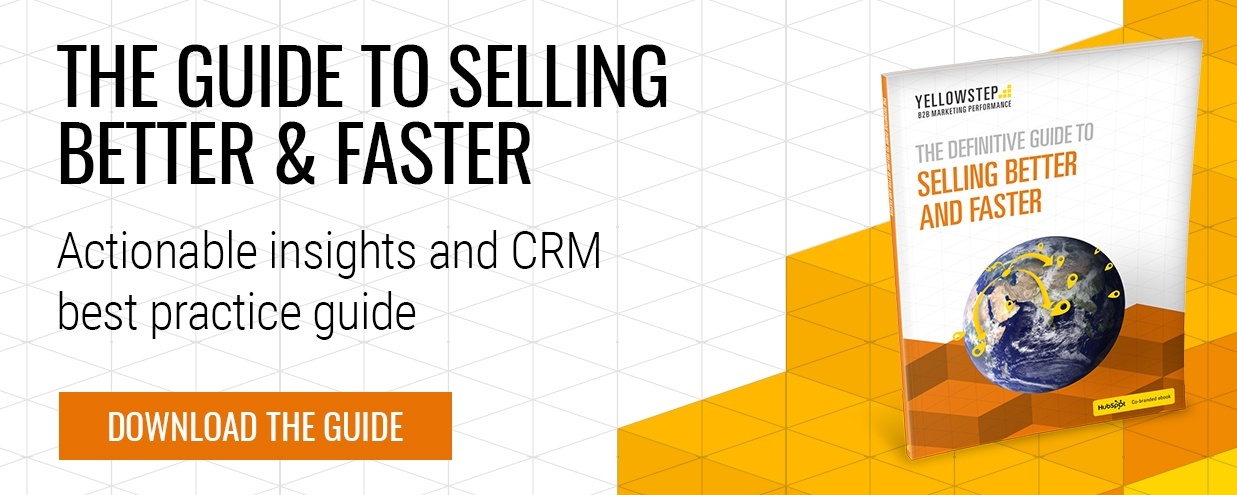Back in 2006, Hubspot was first formed and the era of inbound marketing began. Since then, inbound marketing became the blueprint for many businesses to follow and counter more expensive outbound methods, while ensuring they became more dominant within search engines, social media, and value-orientated content.
And driving traffic and leads is all gravy, but there’s no ‘happily ever after’ just yet. Where does sales and revenue fit into the inbound equation? The answer is inbound sales:
Inbound sales is a personalised and helpful sales experience, focussed on a prospect’s needs, pain points, and goals. To be truly effective, your sales team will need to be supplemented with a contact’s data and information, received during the inbound marketing process.
With salesforce data claiming that 65% of business buyers say they’d switch brands if a company didn’t make efforts to personalise their communications, more and more businesses are adopting the mantra ‘always be helping’ rather than ‘always be closing’.
Flipping outbound sales on its head
With purely outbound sales strategies such as cold calling and emailing prospect lists, you are first identifying ‘good fit’ clients and then figuring out their pain point and how your service is a solution.
With inbound sales, you are bringing in prospects through inbound marketing methods by helping tackle their pain points with content, and only then can you focus on filtering through leads that are a good fit for your business.
Inbound sales qualifies prospects before you reach them on the phone - which is a time saver for everybody.
/inbound-sales.jpg?width=700&name=inbound-sales.jpg)
Sounds great! But what do you need?
In order to see the inbound way, you will need to take a look at the whole end-to-end marketing to sales process. That means it’s important to address the following factors:
Buyer personas
A buyer persona is the picture of your ideal customer. You may have more than one, but the less you have the more targeted your sales and marketing messaging will be. A buyer persona helps your whole business understand who you’re trying to target.
Your marketing team then not only know who they’re writing and creating content strategies for, but your sales team can understand their main pain points and how to speak to them to turn into a buyer.
To take the first step and find out how to create buyer personas for your business, have a read of our walkthrough guide.
Technology and data
In order for your sales team to appeal to your audience’s pain points, you need the right data. Passing Excel spreadsheets just doesn’t cut it anymore. It slows down the process, and important leads fall through the gaps.
A powerful CRM system will give sales the lead intelligence they need to deliver a personalised message, as well as track responses and email open rates. You will also be able to automate much of your processes and outreach, saving your team the hours they waste on inefficient data entry.
Strategy
What does your overall end-to-end buyer strategy look like? Are you offering:
- Top of funnel content: This usually involves blog posts and social media posts that deliver content such as how-to guides on a common and specific question or pain point.
- Middle of funnel content: This is content for those that are engaging more with your brand, and is the next logical step for those that download your top of funnel content. They usually include case study packs, product demos, and webinars on your product or service.
- Bottom of funnel content: Now you’ve accumulated a great number of leads from your top and middle of funnel content, the bottom of the funnel involves those who are ready to start engaging with your inbound sales team, such as a trial, assessment, or evaluation.
- A lead nurturing follow-up strategy: How are you going to keep your leads engaged? Your sales team can automate much of this process with helpful follow-up content with platforms such as Hubspot.
Engaging with this type of content can lead your sales team into conversations such as ‘I see you downloaded our guide to lead generation, is this a common challenge for you? If so, this is how our product can help...’
Still unsure about how to define inbound sales?
Let our team explain:
Want more insights and actionable tips?
Inbound selling is more than just a sales philosophy. It’s ensuring that your people, process, and technology all serve the purpose of generating revenue and delivering value to your core audience.
What that in mind, our ebook ‘The definitive guide to selling better and faster’ will give you actionable tips and insights into CRM that you can implement to offer a consistent, scaleable sales experience across your business.

 By
By